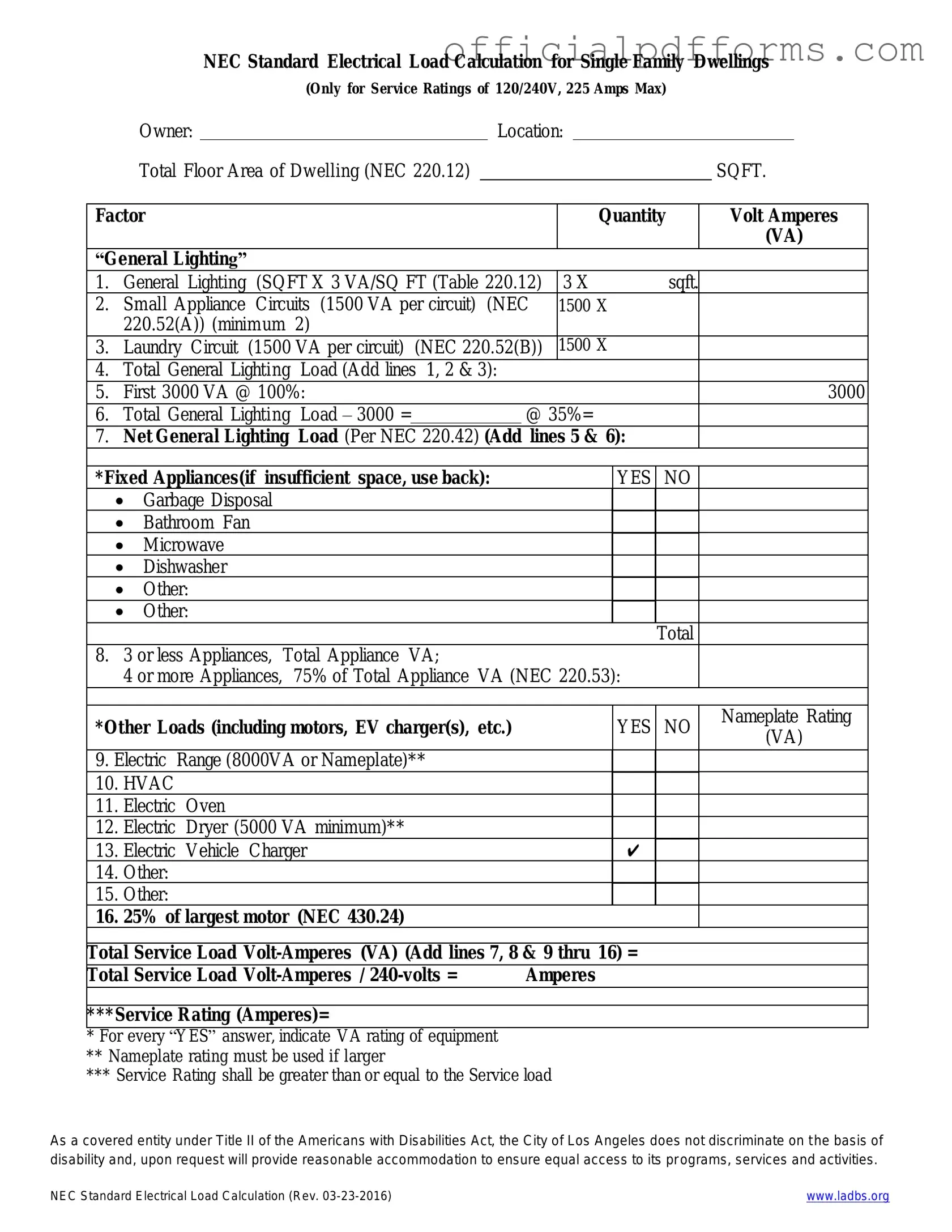The LADBS NEC Standard Electrical Load Calculation form is a document required by the Los Angeles Department of Building and Safety (LADBS) for electrical permit applications. It helps ensure that electrical systems are designed to safely handle the expected load. By completing this form, applicants provide crucial information about the electrical demands of their projects, which helps prevent overloads and potential hazards.
This form must be filled out by anyone applying for an electrical permit in Los Angeles. This includes homeowners, contractors, and electricians working on new installations, remodels, or additions. If your project involves any significant changes to the electrical system, you will need to complete this form to comply with city regulations.
The form requires various pieces of information, including:
-
The type of occupancy (residential, commercial, etc.)
-
The total square footage of the building or area being served
-
The number and types of electrical appliances and fixtures
-
The calculated load for each circuit and the total load
-
Any special loads, such as HVAC systems or large machinery
Accurate and complete information is essential for proper evaluation and approval.
The load calculation is performed using guidelines set forth in the National Electrical Code (NEC). The form provides specific methods for calculating the load based on the type of occupancy and the appliances used. Generally, you will need to:
-
Identify all electrical devices and their wattage.
-
Calculate the demand load based on NEC tables and guidelines.
-
Sum the loads to determine the total electrical demand.
It is advisable to consult with a qualified electrician if you are unsure about any calculations.
Once you submit the completed form along with your permit application, LADBS will review it. They will check for accuracy and compliance with electrical codes. If everything is in order, they will issue the permit. If there are any issues, you may be asked to provide additional information or make adjustments. Timely submission can help expedite the permitting process.
